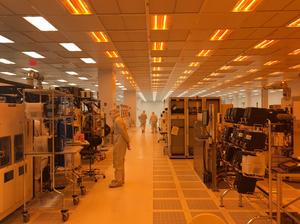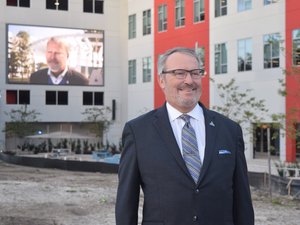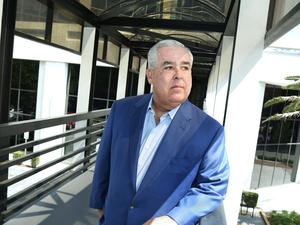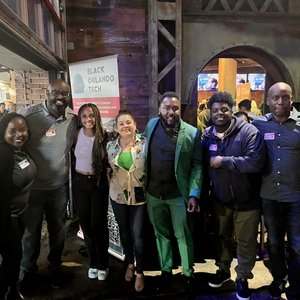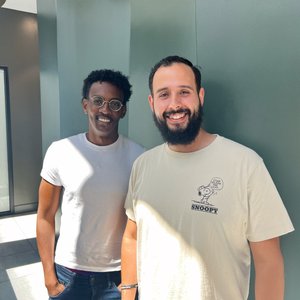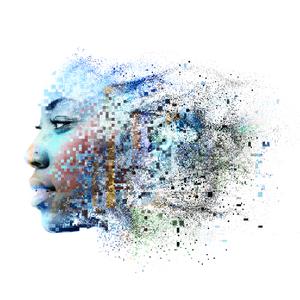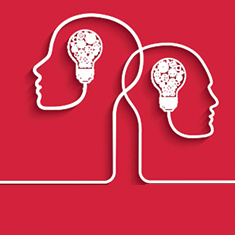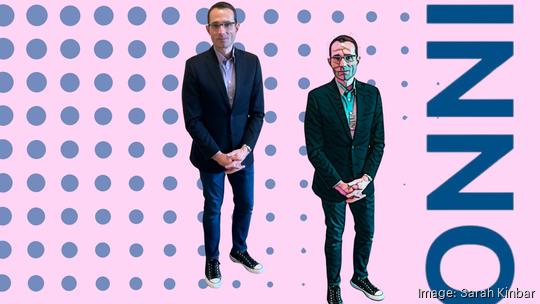
Istari CEO Will Roper, who was in town this week as the keynote speaker at the 8th Annual Florida Simulation Summit on May 10, intends to actualize an engineering metaverse — something that may benefit the Orlando business community in the future.
OBJ caught up with Roper at the event that was co-hosted by Orange County and the National Center for Simulation and focused on digital-twin technology to learn more.
“I'm sure everyone had a definition of a digital twin when they came in [today] because it's in popular media enough," said Roper, "But to what degree, there would be huge variance, and that's really what makes this field a little mysterious right now. It's easy to get through chapter one of the book, that you could have a digital surrogate to something physical. But when you go to chapter two, you have to ask how close of an approximation does it have to be? Which takes you to chapter three. It really depends on what purpose. And chapter four is how to manage the risk associated with that purpose.”
The summit brought in voices in various sectors ranging from transportation to security, education and tourism, each one walking attendees through their processes, each one arriving here: A computer simulation, or digital twin, should represent reality well enough — in the sphere of its intent — that it can be relied upon for strategic decision making.
Simulation case studies
For example, one simulation explored different scenarios in travel patterns related to changes in climate conditions.
Another project, Orlando’s digital twin (yes, a virtual replica of the city comprised of a variety of data sets) is a new way for real estate developers, local governments, universities and other groups to visualize how master plans, transportation projects and other large-scale projects will look.
In addition, Osceola County — along with the Orlando Economic Partnership, University of Central Florida and Bridg — got a grant last year to develop a digital-twin of the Center for NeoVation in Kissimmee and its semiconductor production line that can be used to improve semiconductor reliability and productivity.
Government: From inventor to partner
Roper’s expertise in this arena has roots in his Air Force days, when simulations aided in perfecting acquisitions: “We saved years and billions of dollars by digitizing things that we would've done physically.”
With regard to technological advancements, “going back to the Cold War, it typically began with military being the first adopter because there's risk involved. The military adopts it first and then civilian regulators draft off of what the military has done after the technology has become more mature.”
But in the case of digital twinning, the military is tapping into Silicon Valley practices. “Today it's just not the case that the government needs to invent most of the technology in the world. Private industry is inventing more and more. In fact, private industry in the U.S. now does 80% of the research and development," he said.
According to Roper, this means the government should transition from inventor to partner. “And in a partnership perspective, yes, [the government’s] money is useful and many companies can benefit, but its regulatory relief for military missions can be even more valuable,” he said.
Deliberately triggering change
Roper has a track record of leading teams and entire professional communities toward change.
For example, he wore his first pair of Converse at age five. They were red. Now a staple in his wardrobe, he points to the black Converse he wore this week as symbolism for going against the grain to effect a positive change.
“I started wearing a little non-traditional workwear when I was in the Air Force. I was in a four star-level Pentagon job managing a $60 billion budget. Most people expect very straight-laced behavior. But I wanted to encourage all the people [around me] to innovate, and that means you have to buck the system a little bit and think outside the box. So I started doing it in a visual way. … It's the little things done consistently that lead to cultural change. It's never one big thing that changes people's minds. I find it's a lot of little things that add up.”
He’s doing the same now, not just through fashion, but in the breadcrumbs he drops in each speaking engagement, each class taught and each conversation had. Baked into the dialogue are the echoes of a vision he intends to actualize: an engineering metaverse.
The problem with today’s simulation landscape
Roper’s vantage point, at once detailed and broad, puts him in position to critique current activities in simulation across industries.
“Most companies end up doing a lot of digital work, but they don't generate digital value,” he said.
On the one hand, he was reflecting on the potential unreliability of digital twinning. “We can use models and simulations for, say, monitoring traffic, and it can save you time and we can accept greater variance in the result, but we wouldn't accept the same result, say, for building airplanes where we expect highly repeatable, highly reliable results when we put our lives in the hands of the engineers who build them.”
On the other hand, he was considering the intense and prolonged labor of laying down fresh tracks industry by industry, since there is not yet a unified engineering metaverse.
“Most industries have to blaze their trail and begin by asking, what decisions do we make day-to-day based on physical data that we believe we could switch to digital data? Do we have enough digital data to build an effective simulation? What's our risk tolerance? And if they can't answer those questions, then they're going to do what most industries do … [operate] without a clear vision.”
And that brings us to Roper’s and Istari’s mission, which is to democratize access to an engineering metaverse for all. He and his team say they are creating an experience that is accessible in the way the Internet is, and they have the confidence of Google cofounder Eric Schmidt, who in February told Wired magazine, “The Istari team is bringing internet-type usability to models and simulations. This unlocks the possibility of software-like agility for future physical systems – it is very exciting.”
Real-world testing is exorbitantly expensive, outrageously time-consuming and has environmental impacts. Independently created and industry-specific digital twins are very expensive and time-consuming.
However, an engineering metaverse lowers prohibitive budget and time barriers and presents a significantly reduced environmental footprint.
Orlando Inno will deliver more post-event coverage following the Florida Simulation Summit in the coming weeks.
Alex Soderstrom contributed to this report.
Sign up here for The Beat, Orlando Inno’s free newsletter. And be sure to follow us on LinkedIn, Facebook and Twitter.


